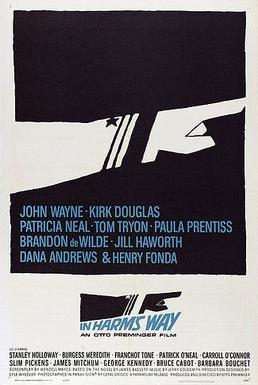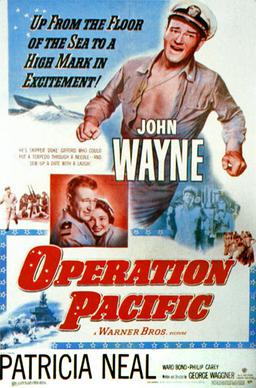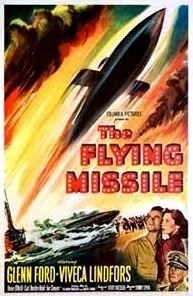
USS Triton (SS-201) was the fourth Tambor-class submarine to be commissioned in the United States Navy in the years leading up to the country's December 1941 entry into World War II. Her wartime service was in the Pacific Ocean. She completed five patrols in the following 14 months, and is credited with the sinking of over 20,000 tons of Japanese shipping and warships. She was lost with all hands on or around March 15, 1943. Of the twelve Tambor-class submarines, only five survived the war.

USS Nautilus (SF-9/SS-168), a Narwhal-class submarine and one of the "V-boats", was the third ship of the United States Navy to bear the name.

USS Tang (SS-306) was a Balao-class submarine of World War II, the first ship of the United States Navy to bear the name Tang. She was built and launched in 1943, serving until being sunk by her own torpedo off China in the Taiwan Strait on 24 October 1944.

USS Trigger (SS-237) was a Gato-class submarine, the first ship of the United States Navy to be named for the triggerfish.

USS Trout (SS-202) was the fifth Tambor-class submarine commissioned in the United States Navy, serving in the Pacific from 1941 to 1944. She received 11 battle stars for World War II service and three Presidential Unit Citations, for her second, third, and fifth war patrols. Trout also delivered ammunition to the besieged American forces on Corregidor and brought out 20 tons of gold bars and silver pesos from the Philippine currency reserve to Pearl Harbor. During 1941, she was used as a target by a series of tests determining the vulnerability of submarines to depth charge attacks.

USS Albacore (SS-218) was a Gato-class submarine which served in the Pacific Theater of Operations during World War II, winning the Presidential Unit Citation and nine battle stars for her service. During the war, she was credited with sinking 13 Japanese ships and damaging another five; not all of these credits were confirmed by postwar Joint Army–Navy Assessment Committee (JANAC) accounting. She also holds the distinction of sinking the highest warship tonnage of any U.S. submarine. She was lost in 1944, probably sunk by a mine off northern Hokkaidō on 7 November.

USS Tullibee (SS-284), a Gato-class submarine, was the first ship of the United States Navy to be named for the tullibee. Her keel was laid down on 1 April 1942 at Mare Island, California, by the Mare Island Navy Yard. She was launched on 11 November 1942 sponsored by Mrs. Kenneth C. Hurd; and commissioned on 15 February 1943, Commander Charles Frederic Brindupke in command.

USS Atule (SS/AGSS-403), a Balao-class submarine, was the only ship of the United States Navy to be named for the atule.

Operation Petticoat is a 1959 American World War II submarine comedy film in Eastmancolor from Universal-International, produced by Robert Arthur, directed by Blake Edwards, that stars Cary Grant and Tony Curtis.

In Harm's Way is a 1965 American epic historical romantic war film produced and directed by Otto Preminger and starring John Wayne, Kirk Douglas, and Patricia Neal, with a supporting cast featuring Henry Fonda in a lengthy cameo, Tom Tryon, Paula Prentiss, Stanley Holloway, Burgess Meredith, Brandon deWilde, Jill Haworth, Dana Andrews, and Franchot Tone. Produced with Panavision motion picture equipment, it was one of the last black-and-white World War II epics, and Wayne's last black-and-white film. The screenplay was written by Wendell Mayes, based on the 1962 novel Harm's Way, by James Bassett.

USS Skipjack (SS-184), was a Salmon-class submarine, the second ship of the United States Navy to be named after the skipjack tuna. She earned multiple battle stars during World War II and then was sunk, remarkably, by an atomic bomb during post-World War II testing in Operation Crossroads. Among the most "thoroughly sunk" ships, she was refloated and then sunk a second time as a target ship two years later.

USS Sturgeon (SS-187), a Salmon-class submarine, was the second ship of the United States Navy to be named for the sturgeon. Her 1944 sinking of the Japanese troopship Toyama Maru, killing more than 5,000 Japanese, was one of the highest death tolls from the sinking of a single ship in history. Her 1942 sinking of the Montevideo Maru which, unknown to crew on the Sturgeon, was carrying over 1,000 POWs, was the worst maritime disaster in Australian history.

USS Flying Fish (SS/AGSS-229), a Gato-class submarine, was the first submarine and second ship of the United States Navy to be named for the flying fish. Flying Fish is credited with having sunk a total of 58,306 tons of Japanese shipping and received 12 battle stars for World War II service.

USS Haddock (SS-231), a Gato-class submarine, was the second submarine of the United States Navy to be named for the haddock, a small edible Atlantic fish related to the cod. A previous submarine had been named Haddock (SS-32), but was renamed K-1 prior to her launching, so Haddock (SS-231) was the first to actually bear the name.

The first USS Sunfish (SS-281), a Gato-class submarine, was the first ship of the United States Navy to be named for the ocean sunfish, Mola mola, a plectognath marine fish, having a deep body truncated behind, and high dorsal and anal fins.

Operation Pacific is a 1951 black-and-white World War II submarine war drama from Warner Bros. Pictures, produced by Louis Edelman, and written as well as directed by George Waggner. John Wayne and Patricia Neal star and Ward Bond and Philip Carey play supporting roles.

USS Pintado (SS-387/AGSS-387), a Balao-class submarine, was the first ship of the United States Navy to be named for the pintado.

The Flying Missile is a 1950 black-and-white Cold War era Columbia Pictures film starring Glenn Ford and Viveca Lindfors. Made with the cooperation of the US Navy, it tells a fictionalized story of the then recently revealed story of the US Navy's first mounting and firing submarine-launched cruise missiles such as the Republic-Ford JB-2 Loon off the deck of submarines.

Run Silent, Run Deep is a 1958 American black-and-white war film starring Clark Gable and Burt Lancaster, based on the 1955 novel of the same name by Commander Edward L. Beach Jr. The picture was directed by Robert Wise and produced by Harold Hecht. The title refers to "silent running", a submarine stealth tactic. The story describes World War II submarine warfare in the Pacific Ocean, and deals with themes of vengeance, endurance, courage, loyalty, and honor, and how these can be tested during wartime.
I-41 was an Imperial Japanese Navy B2 type submarine. She was completed at Kure Navy Yard on 18 September 1943, whereupon she entered into service with the Imperial Japanese Navy Yokosuka Naval District, SubRon 11, and sailed to Yokosuka for final trials under the command of Lt. Commander Tamori Yoshimatsu. This was completed by 15 December 1943 and command was transferred to Lt. Commander Itakura Mitsuma. I-41 was reassigned to the Sixth Fleet in SubRon 1's Sub Division 15.



















